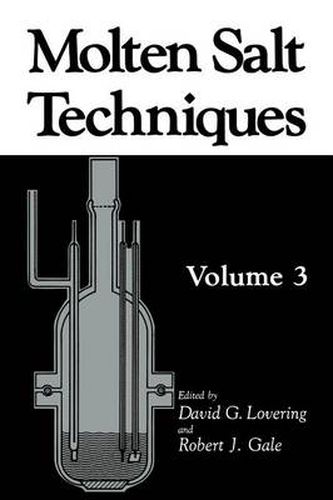Readings Newsletter
Become a Readings Member to make your shopping experience even easier.
Sign in or sign up for free!
You’re not far away from qualifying for FREE standard shipping within Australia
You’ve qualified for FREE standard shipping within Australia
The cart is loading…






This title is printed to order. This book may have been self-published. If so, we cannot guarantee the quality of the content. In the main most books will have gone through the editing process however some may not. We therefore suggest that you be aware of this before ordering this book. If in doubt check either the author or publisher’s details as we are unable to accept any returns unless they are faulty. Please contact us if you have any questions.
The physicist Kamerlingh Onnes, who was the first to liquify helium (1908), had written on the walls of his laboratory in Leiden: From measur ing to knowing. As true as this is at very low temperatures, it is just as applicable at the high temperatures of molten salts. Only on the basis of exact measurements by a plethora of experimental methods can any real understanding be reached of both classes of liquids. In both temperature ranges experimental difficulties are much greater than those encountered around ambient temperature. Molten salts often present a formidable challenge to the experimen talist, for example, because of corrosion and other materials problems. Applications of molten salts were for a long time based on empirical knowledge alone. This was true for the first application of molten salts in 1807, when Davy obtained sodium and potassium by electrolysis of the molten hydroxides. For 100 years the winning of aluminum has been based on the very nearly simultaneous invention by Hall and Heroult (1886) of the electrolysis of molten cryolite. The process, though essentially unchanged, has since been perfected owing to an improvement in our understanding of what actually happens, based on difficult measurements ofthe many variables. However, even now there are gaps in our knowledge.
$9.00 standard shipping within Australia
FREE standard shipping within Australia for orders over $100.00
Express & International shipping calculated at checkout
This title is printed to order. This book may have been self-published. If so, we cannot guarantee the quality of the content. In the main most books will have gone through the editing process however some may not. We therefore suggest that you be aware of this before ordering this book. If in doubt check either the author or publisher’s details as we are unable to accept any returns unless they are faulty. Please contact us if you have any questions.
The physicist Kamerlingh Onnes, who was the first to liquify helium (1908), had written on the walls of his laboratory in Leiden: From measur ing to knowing. As true as this is at very low temperatures, it is just as applicable at the high temperatures of molten salts. Only on the basis of exact measurements by a plethora of experimental methods can any real understanding be reached of both classes of liquids. In both temperature ranges experimental difficulties are much greater than those encountered around ambient temperature. Molten salts often present a formidable challenge to the experimen talist, for example, because of corrosion and other materials problems. Applications of molten salts were for a long time based on empirical knowledge alone. This was true for the first application of molten salts in 1807, when Davy obtained sodium and potassium by electrolysis of the molten hydroxides. For 100 years the winning of aluminum has been based on the very nearly simultaneous invention by Hall and Heroult (1886) of the electrolysis of molten cryolite. The process, though essentially unchanged, has since been perfected owing to an improvement in our understanding of what actually happens, based on difficult measurements ofthe many variables. However, even now there are gaps in our knowledge.